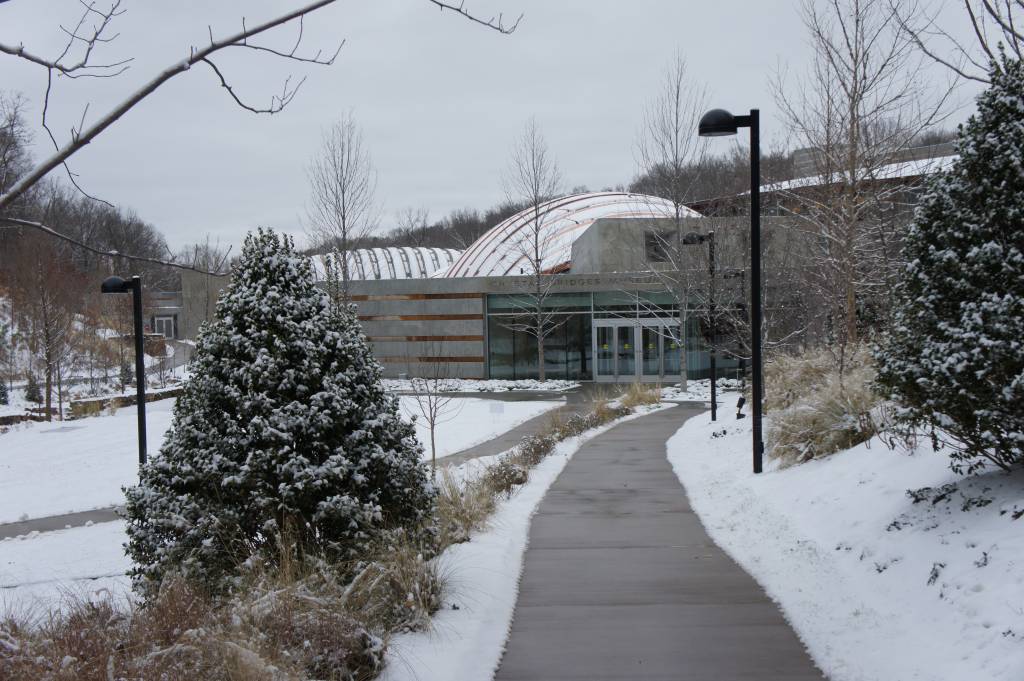This is the brains of the HVAC system. All of the data that is collected by sensors is sent here, compiled by a processor within the unit, and is then relayed to the computer. And it all happens in real-time, 24 hours a day, 7 days a week, Christmas and New Year’s too.
Here you can see an individual gallery recording data in real-time. If any sensor ever goes out of acceptable range, a text message is immediately sent to the HVAC supervisor to alert them to the problem. How do you determine an acceptable range? Well that question is a little long and complicated, but the short of it is museum professionals noticed early on that extreme temperature fluctuations (like that 25-degree drop mentioned earlier) caused damage to collection items. The best way to help prevent or lessen these fluctuations is by maintaining a stable temperature and relative humidity inside the museum.
This is a PEM2 data logger. They are located throughout the galleries, and are constantly recording the environmental readings in the galleries. The information from the data logger is downloaded, and the uploaded to an online server, which stores all our readings, and compiles the facilities report seen on my computer screen. The graph on the right shows our temperature range, and the left one shows RH.
The facilities report is kind of like our report card. It allows other museums to view our temperature recordings to see how our galleries manage temperature fluctuations in July versus in December. This aspect of the facilities report is key as it tells potential lenders and collaborators that we can provide the optimum care for their collection items, despite that crazy winter storm Nika raging outside.
So what happens to art when climate is not monitored or controlled? Well it can be a pretty ugly picture, depending on the severity. For very minor fluctuations +/-10-15, works will experience minor to no damage based on media. More severe cases, such as works left exposed to unregulated climate control and the elements can result in art that is seriously damaged. The most famous example of a work left open to the elements in an uncontrolled environment for a prolonged period of time is Leonard da Vinci’s The Last Supper. The fresco is in the refectory of the Convent of Santa Maria delle Grazie in Milan, Italy, and was left exposed to the unregulated climate for decades. The combination of unregulated climate control and experimental techniques by Leonardo resulted in a work that was almost completely lost if not for a massive restoration and conservation effort. Luckily, this beautiful piece of work found a happy ending, however many works that are not properly cared for are permanently destroyed.
So the next time you visit a museum and wonder why it feels like the arctic tundra inside, or wonder why conservators are so persnickety about temperature, or see collections management staff with concerned faces because the doors are icing from the inside, remember it’s not because we’re a bunch of curmudgeons who don’t enjoy those 60-degree days in February. We just want to make sure the art also enjoys those days…as well as many more to come.







